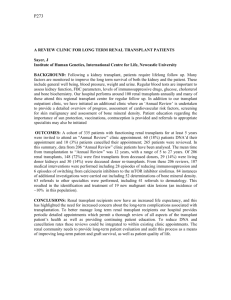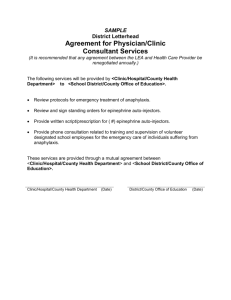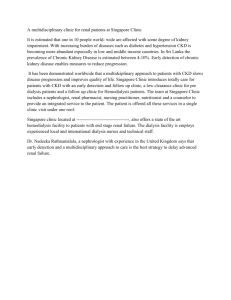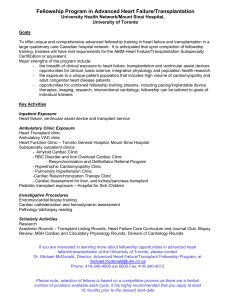Impact of a long-term renal transplant clinic on management of
advertisement
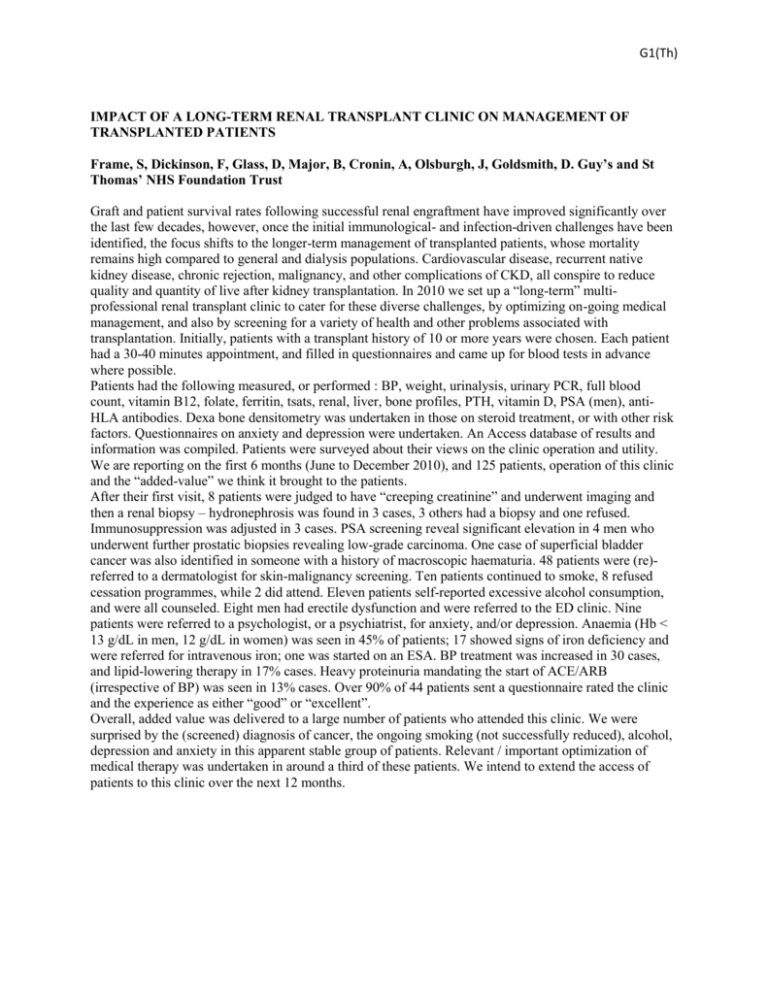
G1(Th) IMPACT OF A LONG-TERM RENAL TRANSPLANT CLINIC ON MANAGEMENT OF TRANSPLANTED PATIENTS Frame, S, Dickinson, F, Glass, D, Major, B, Cronin, A, Olsburgh, J, Goldsmith, D. Guy’s and St Thomas’ NHS Foundation Trust Graft and patient survival rates following successful renal engraftment have improved significantly over the last few decades, however, once the initial immunological- and infection-driven challenges have been identified, the focus shifts to the longer-term management of transplanted patients, whose mortality remains high compared to general and dialysis populations. Cardiovascular disease, recurrent native kidney disease, chronic rejection, malignancy, and other complications of CKD, all conspire to reduce quality and quantity of live after kidney transplantation. In 2010 we set up a “long-term” multiprofessional renal transplant clinic to cater for these diverse challenges, by optimizing on-going medical management, and also by screening for a variety of health and other problems associated with transplantation. Initially, patients with a transplant history of 10 or more years were chosen. Each patient had a 30-40 minutes appointment, and filled in questionnaires and came up for blood tests in advance where possible. Patients had the following measured, or performed : BP, weight, urinalysis, urinary PCR, full blood count, vitamin B12, folate, ferritin, tsats, renal, liver, bone profiles, PTH, vitamin D, PSA (men), antiHLA antibodies. Dexa bone densitometry was undertaken in those on steroid treatment, or with other risk factors. Questionnaires on anxiety and depression were undertaken. An Access database of results and information was compiled. Patients were surveyed about their views on the clinic operation and utility. We are reporting on the first 6 months (June to December 2010), and 125 patients, operation of this clinic and the “added-value” we think it brought to the patients. After their first visit, 8 patients were judged to have “creeping creatinine” and underwent imaging and then a renal biopsy – hydronephrosis was found in 3 cases, 3 others had a biopsy and one refused. Immunosuppression was adjusted in 3 cases. PSA screening reveal significant elevation in 4 men who underwent further prostatic biopsies revealing low-grade carcinoma. One case of superficial bladder cancer was also identified in someone with a history of macroscopic haematuria. 48 patients were (re)referred to a dermatologist for skin-malignancy screening. Ten patients continued to smoke, 8 refused cessation programmes, while 2 did attend. Eleven patients self-reported excessive alcohol consumption, and were all counseled. Eight men had erectile dysfunction and were referred to the ED clinic. Nine patients were referred to a psychologist, or a psychiatrist, for anxiety, and/or depression. Anaemia (Hb < 13 g/dL in men, 12 g/dL in women) was seen in 45% of patients; 17 showed signs of iron deficiency and were referred for intravenous iron; one was started on an ESA. BP treatment was increased in 30 cases, and lipid-lowering therapy in 17% cases. Heavy proteinuria mandating the start of ACE/ARB (irrespective of BP) was seen in 13% cases. Over 90% of 44 patients sent a questionnaire rated the clinic and the experience as either “good” or “excellent”. Overall, added value was delivered to a large number of patients who attended this clinic. We were surprised by the (screened) diagnosis of cancer, the ongoing smoking (not successfully reduced), alcohol, depression and anxiety in this apparent stable group of patients. Relevant / important optimization of medical therapy was undertaken in around a third of these patients. We intend to extend the access of patients to this clinic over the next 12 months.

